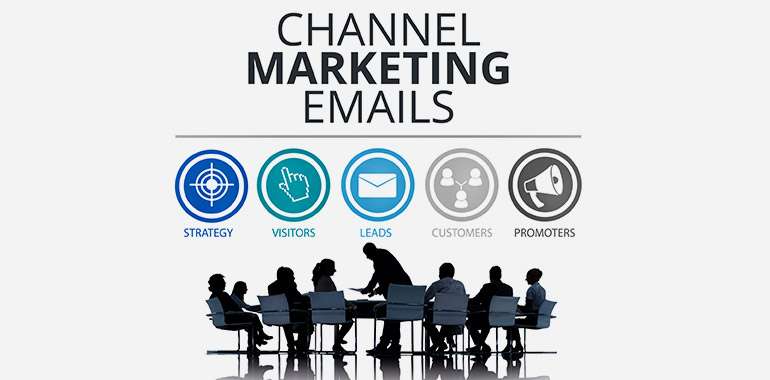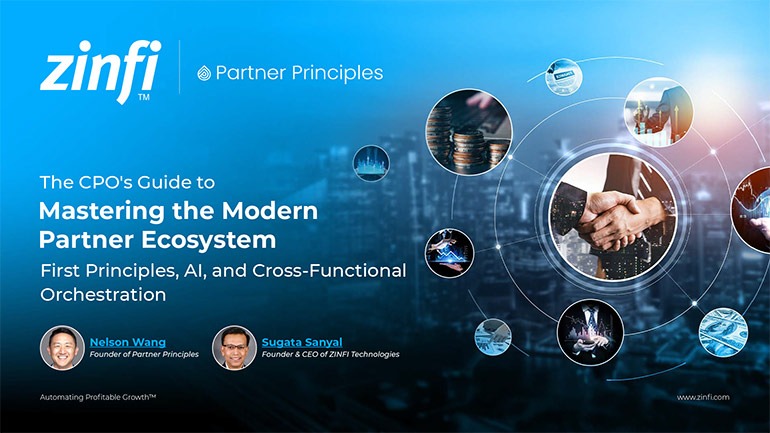Best Practices Articles

How To Write Effective Emails In A Channel Marketing Organization
We live in a distributed global environment. Most of the team members in a channel marketing organization are dispersed around the world. We not only face the challenge of working in different time zones, but also a variety of challenges associated with cultural and language differences. If you are in a channel marketing organization, it’s crucial to keep these challenges in mind when you communicate via email. (In a separate article, we will explore the best ways to communicate in our digital world by leveraging various digital tools; the purpose of this article is to focus primarily on effective email communication.)
According to Wikipedia, the word “communication” (from Latin commūnicāre, meaning “to share”) refers to “the act of conveying intended meanings from one entity or group to another through the use of mutually understood signs and semiotic rules.” Wow! That is a loaded statement—so many things going on here. In this article, we will pay special attention to two specific phrases within this definition: “intended meanings” and “mutually understood.”
Let’s start with “intended meanings.” This refers to what you are trying to say or explain. “What you are trying to say” is the critical concept here. If the information you are trying to convey is simple, for example, then your email may be very short. If you are trying to convey a complex set of ideas, however, your email will probably be long and will need to be structured in a way that enhances readers’ understanding. An example of a simple communication would be an email in which you tell someone when you can or cannot meet. An example of a complex communication would an email in which you try to explain the reasons behind certain elements of your pricing strategy.
Now, when it comes to the other phrase, “mutually understood,” that’s where the real challenges come in. If you are reading an email that is a continuation of a thread, then you can generally figure out what is going on by reading through most of the entire thread—even if the most recent respondent hasn’t been entirely clear. However, when you apply the challenges of different languages, different cultures, different time zones, and differences in how much knowledge various readers have about the subject matter, terse one- or two-line responses can easily be interpreted in different ways by different readers. In channel marketing, this risk is significantly higher because channels vary by company and industry, and even within a company your readers likely have very different backgrounds, come from different regions, speak different languages, and so on. So, while you may use certain common terms across your organization, the use of acronyms or cryptic responses, for instance, can easily confuse certain readers and cause them to perceive a different meaning than you originally intended to communicate.
The key question for this discussion is this: What can you do to get better at communicating by email with your distributed channel marketing teams? Let’s try to figure out what can be done to improve the probability that your “intended meanings” are “mutually understood” by the broadest range of potential readers.
First, you need to understand the different types of emails that you are using. The list below is not comprehensive, but it covers most of the day-to-day email conversations that occur in a distributed channel marketing organization:
- Meeting-related
- Request to set up and change a meeting
- Following-up from a meeting
- Questions-related
- You want to understand something from another colleague
- You want to answer someone else’s questions
- Sharing status
- You are an employee reporting to a manager, or…
- … you are a manager informing an employee
- Sharing a decision
- The decision has a significant impact
- The decision has a minor impact
- Sharing information
- On a simple topic
- On a complex topic
Second, you need to have a generic approach that is consistent for all types of emails, but then develop specific approaches for each type. The generic approach should be focused on maintaining and managing the readability or “flow” of your email. (It is amazing to see how many people skip basic email etiquette!) So what are the basic generic elements that should be followed in any business email?
- Salutation: We are in a formal business environment and not communicating with friends. So we should always start with “Hello” or “Dear…” or “Hi”—some form of a salutation. And don’t forget cultural variations such as the –san that Japanese correspondents typically attach to a recipient’s last name as a sign of respect.
- Paragraphs and punctuation: When did email become a form of “stream of consciousness” communication, without commas, periods and other punctuation, and without paragraphs to help structure and differentiate ideas? Why should the onus be on the reader to figure out where you are starting and how you are finishing? In business communications, it’s imperative to follow the conventions of clear and relatively formal writing. That means separating phrases and thoughts with appropriate punctuation, a breaking up content into paragraphs instead of issuing a long, continuous stream of undifferentiated content.
- Logical structure: If the email you are composing is long and complex, then provide a basic structure. That means having an opening paragraph introducing the subject matter, a series of explanatory paragraphs, and a closing paragraph that summarizes your essential points.
Do not fall into the trap of thinking, “I hate long emails.” My response to that? “Too bad.” Emails should be as long as they need to be to convey the necessary information. Your job in channel marketing is to explain what you have to say thoroughly and professionally; it’s up to individual readers to determine whether they want to take the time to understand what you are saying. The goal of being thorough, by the way, is NOT to belabor a point. The goal is to clearly explain topics related to your channel marketing activities, tools, processes and programs—information that is relevant to your audience. So use words wisely, but do not starve your explanations to the extent that they become cryptic and difficult to interpret. Here’s another way of thinking about it: Don’t assume your readers already know what you are talking about. Help them understand.
Okay, once you begin taking a more professional approach to your email writing and observing the generic conventions common to all emails, then it’s time to think about the requirements of specific email types. If you are trying to set up a meeting time, open with a brief salutation, and communicate clearly when you want to meet or can meet. If the email concerns a price increase, provide your reader with relevant background, explain the increase and close with a succinct discussion of the value you continue to provide to your customers. If the email focuses on dispute resolution and is not a legal matter, state clearly where you think the confusion or misunderstanding lies, explain your position respectfully and end by describing a positive path forward that can be a win-win for all parties. The generic conventions of business emails help communicate a basic level of respect for your recipients. The requirements of specific types of emails, on the other hand, should force you to think through as clearly as possible what you are trying to say, why it is important to both you and the recipient, and the effect the email will ultimately have on those who read it.
One last pet peeve: Too often we forget to use the spell check function of our email client. Nothing is more annoying or even insulting—especially to clients or prospects—than a response that is poorly written, and filled with spelling and grammar errors. So turn on the spelling- and grammar-checking features of your email client (keeping in mind, however, that these automated functions can sometimes be wrong). If it is a very important email, then get a professional writer to edit it. I’m not kidding! Leveraging professional expertise can have a huge impact on how well people understand what you’re saying.
The entire purpose of your email communication is to make someone else understand what you mean. So, the simpler, clearer and more carefully structured your email is, the more effective your communication will be. Also, avoid the tendency of many channel marketing professionals to use too many acronyms. Again, it’s important to remember who your readers are. Are you certain that every prospect or new client you are addressing in an email knows the acronyms associated with your solution? When in doubt, use the long form of the term: “Unified Partner Management (UPM) comprises Partner Relationship Management (PRM), Channel Marketing Management (CMM) and Channel Sales Management (CSM)” instead of “UPM comprises PRM, CMM and CSM.” Relying on acronyms only will totally confuse readers who are unfamiliar with them, even if the spell checker detects no mistakes.
While I started this article focused on writing emails in a distributed channel marketing organization where constant communication with proper depth and balance is really important, the good news is that the skills you develop in writing emails in a channel marketing context can be transported to other disciplines and other organizations. Happy writing and best wishes in getting your point across!
If you want to learn more, please go to zinfi.com.
Best Practices Guides
 First Principles Drive Modern Partner Ecosystem Success Best Practices
First Principles Drive Modern Partner Ecosystem Success Best PracticesDownload for FREE
 The Future of Managed Service Providers: Navigating the Age of AI and Automation
The Future of Managed Service Providers: Navigating the Age of AI and AutomationDownload for FREE
 Modernizing Channel Marketing: AI and Ecosystem Enablement Best Practices
Modernizing Channel Marketing: AI and Ecosystem Enablement Best PracticesDownload for FREE
 The Channel’s Shift to Partner-Led With AI Best Practices
The Channel’s Shift to Partner-Led With AI Best PracticesDownload for FREE
 Hyperscalers, ISVs, and AI: Shaping the Future of B2B Software Distribution
Hyperscalers, ISVs, and AI: Shaping the Future of B2B Software DistributionDownload for FREE
 Definitive Guide to a Partner Ecosystem-First Sales Strategy
Definitive Guide to a Partner Ecosystem-First Sales StrategyDownload for FREE
 The Partner-Led Digital and AI Transformation Best Practices
The Partner-Led Digital and AI Transformation Best PracticesDownload for FREE
 Startup Talent Recruitment: Hiring Missionaries, Not Mercenaries
Startup Talent Recruitment: Hiring Missionaries, Not MercenariesDownload for FREE
 The Future of Partner Relationship Management with AI in Partnerships
The Future of Partner Relationship Management with AI in PartnershipsDownload for FREE
 Cybersecurity for the 99%: Strategies from the Frontline
Cybersecurity for the 99%: Strategies from the FrontlineDownload for FREE
 Mastering Partner Relationships: A Strategic Approach to Business Growth
Mastering Partner Relationships: A Strategic Approach to Business GrowthDownload for FREE
 Mastering Partner Relationship Management: Keys to SaaS Channel Success
Mastering Partner Relationship Management: Keys to SaaS Channel SuccessDownload for FREE